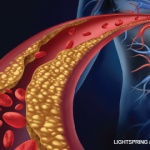A 38-year-old female comes in for her scheduled follow-up for the diagnosis of rheumatoid arthritis. She is on celecoxib, methotrexate, folic acid, and lansoprazole. The patient reports moderate pain, swelling, and stiffness in her wrists and most finger joints every day, which is interfering with activities such as opening jars, buttoning clothing, using a computer keyboard, etc. The patient also reports generalized morning joint stiffness lasting from one to three hours on most days of the week and episodes of fatigue that are easily brought on. She has history of gastroesophageal reflux disease (GERD), but denies dyspepsia or abdominal complaints. The patient also denies fevers, headaches, chest pain, dyspnea, cough, oral ulcers, Raynaud’s phenomenon, rashes, hematochezia, insomnia, or depression. The patient is a secretary in a law firm, is married and has two young children, ages three and five years.
On examination, the patient is alert and oriented, with normal vital signs. Her height is 5’6” and her weight 135 pounds, with a BMI of 21.8. The head, eyes, ears, nose, and throat exam was normal. There was no lymphadenopathy, her lungs were clear, and her heart had regular rate and rhythm with no murmurs or friction rubs. The abdomen was soft, nontender, and had no mass or hepatosplenomegaly. Her skin showed good color and turgor with no rashes.
The musculoskeletal exam: The patient’s gait was slightly stiff. The patient had warmth, swelling, irritability, and decreased range of motion in bilateral wrists; swelling, irritability, bony proliferation, and decreased range of motion in bilateral second through third metacarpophalangeal joints; and bilateral second through fourth proximal interphalangeal joints and is beginning to develop swan neck deformities. The patient had synovial thickening and bony proliferation in bilateral knees, as well as large effusions in bilateral ankles with warmth and slightly decreased dorsiflexion and plantar flexion. All other joints were unremarkable with full range of motion and no evidence of active synovitis.
Diagnosis: Rheumatoid arthritis with active disease and GERD.
Plan: Review of labs done six weeks prior showed mild anemia and elevated erythrocyte sedimentation rate and C-reactive protein. The patient’s other labs were normal. Therapeutic options were discussed with the patient, and the decision was made to add a tumor necrosis factor (TNF)–alpha inhibitor. Actions, side effects, and administration of TNF-alpha inhibitors were reviewed with patient. Laboratory studies were ordered along, with a chest X-ray. A purified protein derivative (PPD) test was placed on patient’s right forearm, and the patient was continued on celecoxib, methotrexate, folic acid, and lansoprazole. In addition, the patient was given a prescription for an occupational therapy evaluation and treatment to include finger splints. She scheduled to return to office in three days to have the PPD read and for a patient-education visit with a registered nurse to learn self-administration of TNF-alpha injections.



